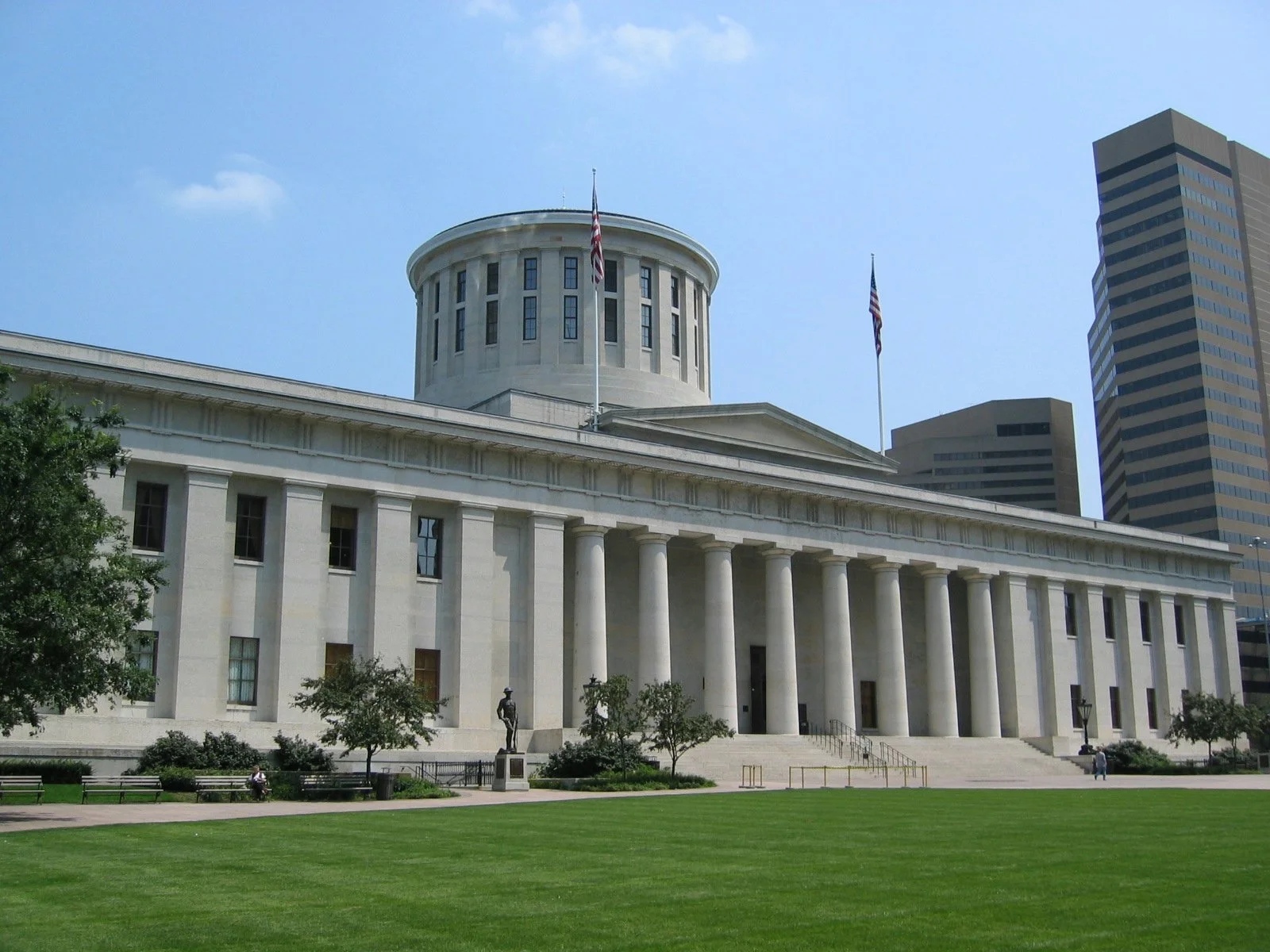If enacted, House Bill 519 would provide between $50 - $100M annually for brownfield remediation work starting in July 2025
GOPC Continues to Lead Efforts to Fund Brownfield Reinvestment at the Ohio Statehouse
Legislation Funding Clean Ohio Revitalization Fund Introduced in Ohio House, Senate
Ohio House overwhelmingly approves budget plan, Ohio Senate debate now underway
The Ohio House gave final approval yesterday to a nearly $69 billion two year budget plan. House Bill 166 is now before the Ohio Senate, where lawmakers have been conducting informal hearings on the budget since late April. The final budget agreement must be approved and submitted to Governor DeWine by June 30 and will take effect on July 1, when the new state fiscal year is set to begin.
Ohio House Introduces Brownfield Regulatory Reform Legislation (HB 737)
One Month Until 2018 General Election
A Great Year and a Heartfelt Farewell to Greater Ohio Policy Center
By Lindsey Gardiner At the beginning of April last year I embarked on a journey with GOPC, as Manager of Government Affairs, that would challenge me to think outside the box and learn about policies that would address issues communities face on a day-to-day basis. From foreclosure to abandoned gas stations, I never knew and truly understood the rippling effect they had on the overall health of a neighborhood and impact on business growth. In a little over a year’s time I have had the privilege to see a significant amount of development of economic development and revitalization policy within the Ohio Legislature. I have come to know numerous legislators who are just as passionate as GOPC in bringing Ohio communities back to pre-great recession levels, and I cannot wait to see the progress that is made over the next year. Unfortunately, the upcoming work that GOPC and the State accomplish together must be made from afar as I have accepted a position that is closer to my family in northeast Ohio. Nevertheless, I will most certainly cherish the relationships I’ve made and carry the lessons I’ve learned about community revitalization and economic development with me wherever my family and I go in Ohio and beyond.
You may have already observed the many legislative developments this month after browsing our May Legislative Update, and in that you might have noticed that the foreclosure reform bill (HB 463) made its way across the legislative “finish line” just before the House and Senate made a much-deserved return to their home districts for the Summer Recess. Like any bill, HB 463 was no easy task and required a lot of negotiation, compromise, and of course patience. A little over a year ago when I began working with GOPC I was invited to serve, per the Ohio State Bar Association, as one of the voices that would help craft legislation aimed at fixing Ohio’s deeply flawed foreclosure policy. Learning about foreclosure was quite the learning process, but as a former legislative staffer, lobbyist, and appointed local government official, I personally believe that Ohio has a lot of serious progress to be proud of.
My first job I served as a Legislative Aide and Clerk of the House Ways and Means Committee for the Ohio House of Representatives, and I have to admit I never thought I would learn so much about tax policy nor did I ever anticipate becoming so passionate about the subject. My experience at GOPC has been similar with fast-track foreclosure, but it is also the case for the remediation of brownfields. When the Clean Ohio Fund was implemented, brownfield cleanup was funded by the Clean Ohio Revitalization Fund (CORF) making our state a leader in turning these unusable eyesores into functioning pieces of communities. The return of jobs and revenue goes unmatched by other remediation programs offered by the State today, and although CORF is no longer implemented I believe Ohio is making its way back to focusing on brownfields with the recent development of the Abandoned Gas Station Cleanup Program. There is so much opportunity when it comes to brownfield cleanup and after working on this particular subject for a little over a year I have learned that job creation, attracting/retaining the millennial workforce, and revitalizing communities are all interconnected with brownfields. GOPC’s unique place-based perspective seamlessly ties these various elements together in a way that I believe will help keep the Legislature moving in the right direction in brownfields cleanup.
Overall, my experience at GOPC has been something I will never forget. GOPC has tremendous leadership and staff, who are passionate about their cause and I thank them for their dedication to revitalizing communities and creating a stronger Ohio. I look forward to seeing GOPC’s research play an instrumental role in educating community leaders and seeing those efforts applied in the policy making process. Best of luck to GOPC and thank you for everything!!!
New Study on Economic Benefits of Clean Ohio Revitalization Fund
A new study released by GOPC finds that public investments in brownfield sites through the state Clean Ohio Revitalization Fund (CORF) generate outsized economic benefits for Ohio’s taxpayers and communities. Based on 21 CORF projects selected for diversity in their degree and type of end use, geographic location, and other characteristics, the GOPC study found the CORF generated substantial direct and indirect economic impacts.
- The 21 projects resulted in a net positive value for the state’s investment, producing $1.16 billion in one-time contributions and contributing $1.4 billion annually to the state’s Gross Domestic Product.
- Goods and services related to predevelopment alone produced a return on investment of $4.67 in new economic activity for every one dollar spent by the Program on the 21 projects.
- For every direct job created or sustained through activities tied to a remediated brownfield, more than one additional job was indirectly created or sustained by the 21 projects.
- Predevelopment and construction activities in the 21 projects created more than $360 million in household and business earnings, while ongoing project operations produce almost $500 million a year in household and business earnings annually.
- The 21 projects annually generate $55 million in state and local taxes and were responsible for an additional $42 million in one-time state and local taxes.
Since 2002, CORF has made grants totaling over $315 million to support the clean-up of 160 brownfield sites in 71 communities. Due to time and resource constraints, GOPC limited its analysis to a representative sample of 21 projects at various levels of development and success located across the state.
If all 160 CORF-funded sites experienced the same level of success and failure demonstrated in the 21 sites of the study, benefits to Ohioans would be projected at 7.6 times the above benefits, including: over $8 billion in one-time and over $10 billion in annual contributions to the state GDP; over $2.5 billion in one-time household and business earnings based on remediation and construction activities and over $3.5 billion in annual household and business earnings; and $418 million annually in state and local taxes.
“The Clean Ohio Revitalization Fund has been an incredible asset to Ohio,” said Lavea Brachman, GOPC Executive Director. “This grant program has not only protected Ohio’s environment but has served as a critical catalyst for economic development in Ohio’s communities and generated state-level return on investment. A nationally recognized program, we now have the facts to demonstrate that it reaps incredible dividends for Ohio’s taxpayers and communities.”
The study also identified a “ripple effect” throughout the state economy from the jobs created through the cleanup activities and reuse operations. Brownfield sites are scattered by the hundreds throughout the state in cities of all sizes as well as rural areas, a legacy of Ohio’s industrial past.
Click here to download the report.
Recent news featuring the report:
"Report Highlights Economic Benefits of Brownfield Redevelopment"
Ideastream - 5/3/2013 Reporter Bill Rice
"Clean Ohio program worth its cost many times over, analysis finds"
Columbus Business First - 5/1/2013 Reporter Jeff Bell









